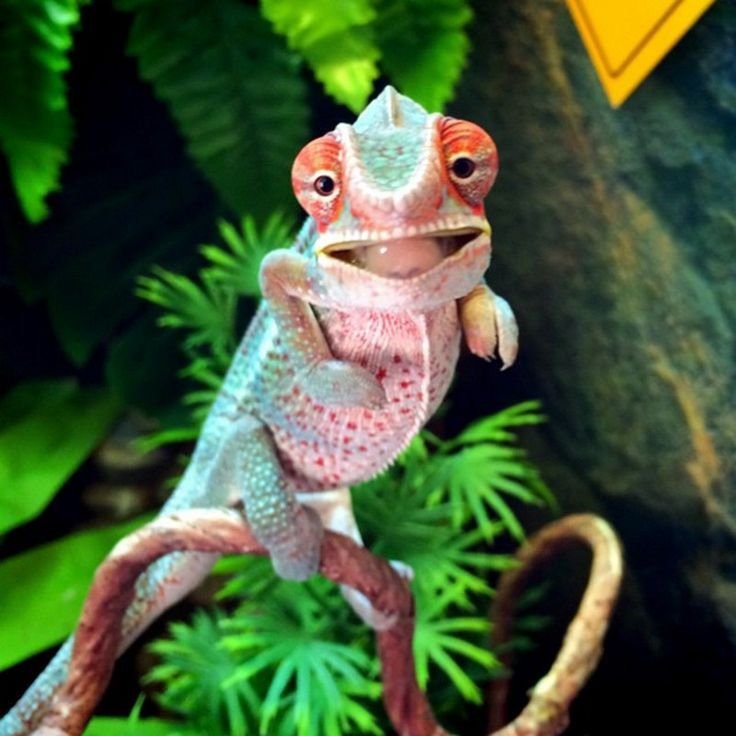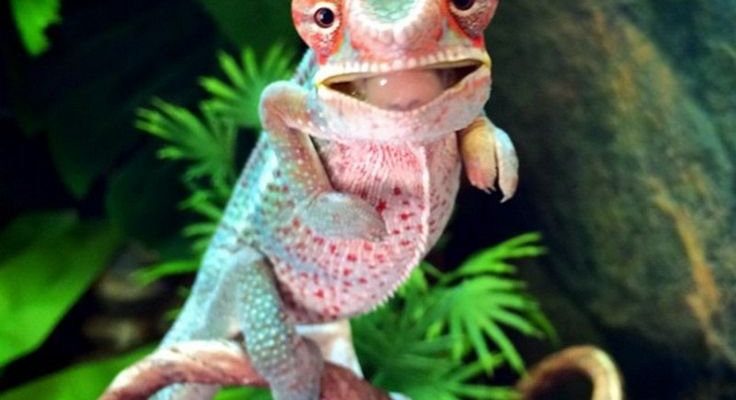
Imagine raising a chameleon as a pet, and every time you walk into the room, it seems to change colors or display different behaviors. Are these changes simply reactions to its environment or signs that your chameleon knows you’re there? Just like a dog might wag its tail when it sees its owner, chameleons exhibit behaviors that make us wonder if they can form connections with us too. Let’s dive into how chameleons perceive their world and explore whether they can recognize their humans.
Understanding Chameleon Behavior
Before we tackle whether chameleons can recognize their owners, it’s essential to understand how they behave in general. Chameleons are solitary creatures, often found in trees. They rely on their environment for safety rather than forming tight bonds with others, which is why many people think they might not recognize their owners.
Chameleons use color changes not just for camouflage but also to communicate. For instance, a bright color can indicate excitement or aggression, while muted tones might suggest calm or stress. This unique ability to change colors serves as their form of expression, allowing them to show how they feel about their surroundings. Understanding these signals is crucial in reading your chameleon’s mood and comfort level.
Interestingly, chameleons have excellent vision. They can see in a wide spectrum of colors, including ultraviolet light. This ability might suggest they can recognize patterns and shapes, which leads us to wonder if they can differentiate between people. Their perception is quite different from ours, so let’s explore that a bit more.
Can Chameleons Recognize Their Owners?
Here’s the thing: while chameleons may not form deep emotional connections as dogs or cats do, there are signs they can recognize their owners. Research indicates that chameleons can identify familiar shapes and colors in their environment, which may include their caregivers.
If you’ve spent enough time with your chameleon and provided consistent care, there’s a good chance it will start responding to you differently than it would to a stranger. For example, when you approach its habitat, you might notice it becoming more active or displaying colors that reflect its comfort or excitement around you. This can be a subtle indication that your chameleon recognizes you, even if it doesn’t show affection in traditional ways.
That said, every chameleon has its own personality. Some might display signs of recognition more readily than others. It’s essential to keep in mind that their solitary nature means they may not seek out attention or interaction in the same way a dog would.
Recognizing Patterns and Routine
Chameleons are creatures of habit. They thrive on routine, which can further reinforce their ability to recognize their owners. If you feed your chameleon at the same time every day or handle it regularly, it can link those events to your presence.
You might notice that when you enter the room at feeding time, your chameleon becomes more active or changes colors. This behavior indicates it anticipates food or interaction. In essence, it learns to associate you with certain actions—like feeding or cleaning its enclosure—which shows a level of recognition.
Over time, the bond built through consistent care can slightly alter its interaction patterns. For instance, if you’re the one who always provides treats or habitat maintenance, your chameleon’s response could shift, indicating a recognition of you as a reliable presence.
Creating a Bond with Your Chameleon
If you want to enhance your chameleon’s ability to recognize you, establishing a regular routine is key. Here are a few simple tips:
- Consistency: Feed and interact with your chameleon at the same times each day.
- Gentle Handling: Spend time gently interacting with your chameleon, so it becomes accustomed to your presence.
- Environment Enrichment: Create a stimulating environment with various textures and branches to explore, helping to build a trusting relationship.
- Observation: Spend time quietly watching your chameleon. This helps it become familiar with your presence without overwhelming it.
Remember, patience is vital! Just like building friendships with humans, a relationship with a chameleon can take time.
Why Recognition Matters in Chameleons
Recognizing their owners can have significant implications for the well-being of chameleons. If your chameleon is comfortable with you, it’s more likely to thrive. Reduced stress levels can lead to better feeding habits, healthier behavior, and even brighter color displays.
Additionally, understanding your chameleon’s personality can help you meet its needs more effectively. If it tends to hide when new people approach, knowing it may recognize you as a safe figure allows you to take measures to keep it calm. Recognizing signs of stress or comfort in your chameleon can lead to a better environment for your pet.
A familiar connection can also help you anticipate health issues. If your chameleon behaves differently, like refusing food or hiding more often than usual, its recognition of you may prompt it to seek your assistance or reflect discomfort. Being attuned to these changes is invaluable in ensuring your chameleon remains healthy and content.
While chameleons may not express affection like other pets, they can still recognize their owners through patterns, colors, and behaviors. By understanding their unique communication style and developing a consistent routine, you can foster a bond that enriches your chameleon’s life.
Being a chameleon caregiver can be incredibly rewarding, and knowing that your pet might recognize you adds a special layer to the relationship. So, the next time you see your chameleon change colors or display a certain behavior, take a moment to appreciate the connection you’re building. In many ways, it’s a reminder that even the most solitary animals can still form meaningful relationships—just in their own unique style.

